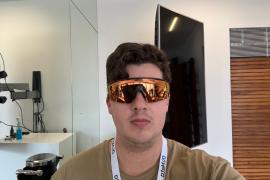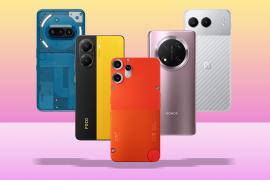The Futurist: The Invisible Wearables
Personal tech is about to get very slim..and transparent, says Matthew Griffin

As a futurist I’m au fait with the fabled ‘singularity’ – the point at which humans and technology merge.
This is estimated to happen in or around the year 2045… but I’m fairly certain people aren’t going to be thrilled at having computer chips implanted surgically into their brains so they can plug into the power of AI in the cloud, or have swarms of nanobots racing around their blood carrying out routine body maintenance – even though I’ve already seen both of these things.
So before tech is placed inside us, wearables will continue to place tech upon us. And there are plenty of developments on the way.
So how do you see the current state of play with wearables, o wise one?
Today our wearables are fairly smart – after all, they can track our heart rates, all manner of metrics, and our location. But by tomorrow’s standards they’re dumber than a rock and chunky as hell. I’m already seeing the next wave of wearables emerge, and thanks to advances in technology the number of wearable formats is soon going to explode.
Sounds like wearable Buckaroo. Are we going to have enough space on our bodies?
Transparent flexible electronics are emerging that mean future wearables will be super-thin and look a lot like clingfilm – the only difference being that they’re a lot more capable and intelligent.
Packed with increasingly powerful sensors – such as infra-red ones that could combine with AI to decode your body’s biochemistry and genetic makeup, and solid-state microwave sensors that could monitor wound-healing at the cellular level, as well as keeping a real-time eye on baby if you’re pregnant – these new wearables will be a major leap from what we use and wear today.
Teams at MIT and Harvard have already developed a ‘smart tattoo’ that places health sensors directly onto your skin, with no power or wireless link required. The ink reacts to the chemical composition of the interstitial fluid beneath your skin’s surface, which reflects the state of your blood.
So how much further can this transparent wearable tech go?
When all these new sensors – and there are a lot more than the ones I just talked about – are combined with AI, there’s nothing they won’t be able to analyse or figure out.
Raised cortisol levels? You’re stressed. Raised white blood cell count and elevated temperature? You’re going to get ill next week. Problematic heartbeat? I’ve already alerted the doctor. High sugar levels? You’ve been snacking again, I’ve alerted your health insurer… and so it goes on.
And as you buy more of these gadgets, you can feel safe in the knowledge that you’re being monitored and looked after – albeit by big companies in the cloud, your insurance companies, and possibly some hackers.
Cheery prospect, then. But let’s be honest, tech implants are still coming, right?
Despite any reservations about having computer chips implanted in our brains, there’s no denying that this tech is getting closer to us.
Think about it – technology used to be far away from us in the form of data-centre mainframes, then it got closer to us with the arrival of the PC and the laptop, then it got closer still in the form of smartphones, and then wearables arrived and all of a sudden it was actually on us.
So one day, yes, it will be inside us… but for now, I’m comfortable leaving that last frontier to the human cyborg wannabes and body hackers. Enough said.


